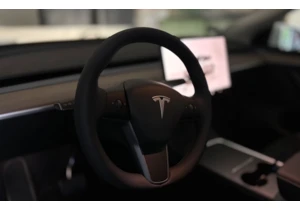Last year, the most powerful geomagnetic storm in 20 years hit Earth. It produced stunning aurora displays in parts of the US that are normally too far south to see them. Normally, such storms are a headache for energy providers. In 1989, for example, the Canadian province of Québec suffered a nine-hour blackout following a series of plasma ejections from the Sun. This time around, power companies were better prepared, and in the US and Canada, there weren't significant service disruptions.
The episode highlighted the value of proper preparation against geomagnetic storms, and for the past couple of years, NASA and IBM have been working to give the scientific community and others a better way to predict solar weather. Today, they're releasing the result of their work, an open-source foundation model called Surya.
Named after the Sanskrit word for the Sun, Juan Bernabe-Moreno, director of IBM Research Europe, UK and Ireland, describes the system as an "AI telescope for the Sun." IBM trained the model on nine years of high-resolution images from the Solar Dynamics Observatory (SDO), a satellite NASA has been using to study the Sun since 2010.
Effectively, Surya applies machine learning to solar image interpretation and forecasting, and the results are promising. In early testing, Bernabe-Moreno says IBM found the model was 16 percent more accurate at answering the question "will there be a solar flare in the next 24 hours?" than past systems. Additionally, the model can generate visual predictions of what the SDO might see ahead of time. So far, using data from the most recently completed solar cycle, IBM has found Surya can accurately predict what the sun will look like two hours ahead of time. "We’re exploring the accuracy of even longer lead time predictions," Bernabe-Moreno told me.
Two hours might not seem like a lot, but according to Bernabe-Moreno, who previously worked at one of Europe's largest energy companies, it could be a game changer for infrastructure providers, which have spent the last few decades building more responsive power grids. Moreover, Surya is a 366 million parameter model, meaning it's light enough to run on less powerful hardware.
The irony of today's announcement is that it demonstrates the value of NASA's science team exactly at a time when its very existence is threatened. If you haven't been following what's been going on at the agency, President Trump plans to cut NASA's science budget by nearly half. The Solar Dynamics Observatory would be among the missions affected by the proposed cuts. It won't be cancelled like New Horizons and OSIRIS-APEX, but according to an analysis by The Planetary Society, the mission would have its operating budget slashed from $14 million annually to $8 million per year.
Policymakers from both parties have pushed back on the proposal, but with the Senate and House not yet in agreement on the agency's 2026 operating budget, and the appropriations deadline quickly approaching, NASA's fate is uncertain. Even if the cuts don't go through, the agency is on track to lose close to 4,000 employees, or about 20 percent of its workforce, as part of the Trump administration's broader efforts to trim the number of workers across the federal government.
Bernabe-Moreno says Surya wouldn't have come together without NASA's help. "From the very beginning, the science team at NASA have been informing us what the model should do, how to validate the model, and how to ensure it's robust," he said.
If there's a silver lining to the funding situation, it's that the science team's work will live on. "The beauty of this model is that we created a capability — an AI platform, if you want," said Bernabe-Moreno. "And this capability has applications beyond NASA."
If you want to check out Surya for yourself, you can download the model from Hugging Face.
This article originally appeared on Engadget at https://www.engadget.com/ai/ibm-and-nasa-made-an-open-source-ai-model-for-predicting-solar-weather-130013974.html?src=rss https://www.engadget.com/ai/ibm-and-nasa-made-an-open-source-ai-model-for-predicting-solar-weather-130013974.html?src=rssInicia sesión para agregar comentarios
Otros mensajes en este grupo.




Hollow Knight: Silksong has a release date of September 4. You heard right, people. This is not a drill. One more time for those in the back, Hollow Knight: Silksong is now schedu

In July, Proton, the company behind Proton Mail,

Apple is once again raising the price of its streaming service. Apple TV+ is shooting up to $13 per month, from $10 per month. This is effective immediately.
Current subscribers will see the

